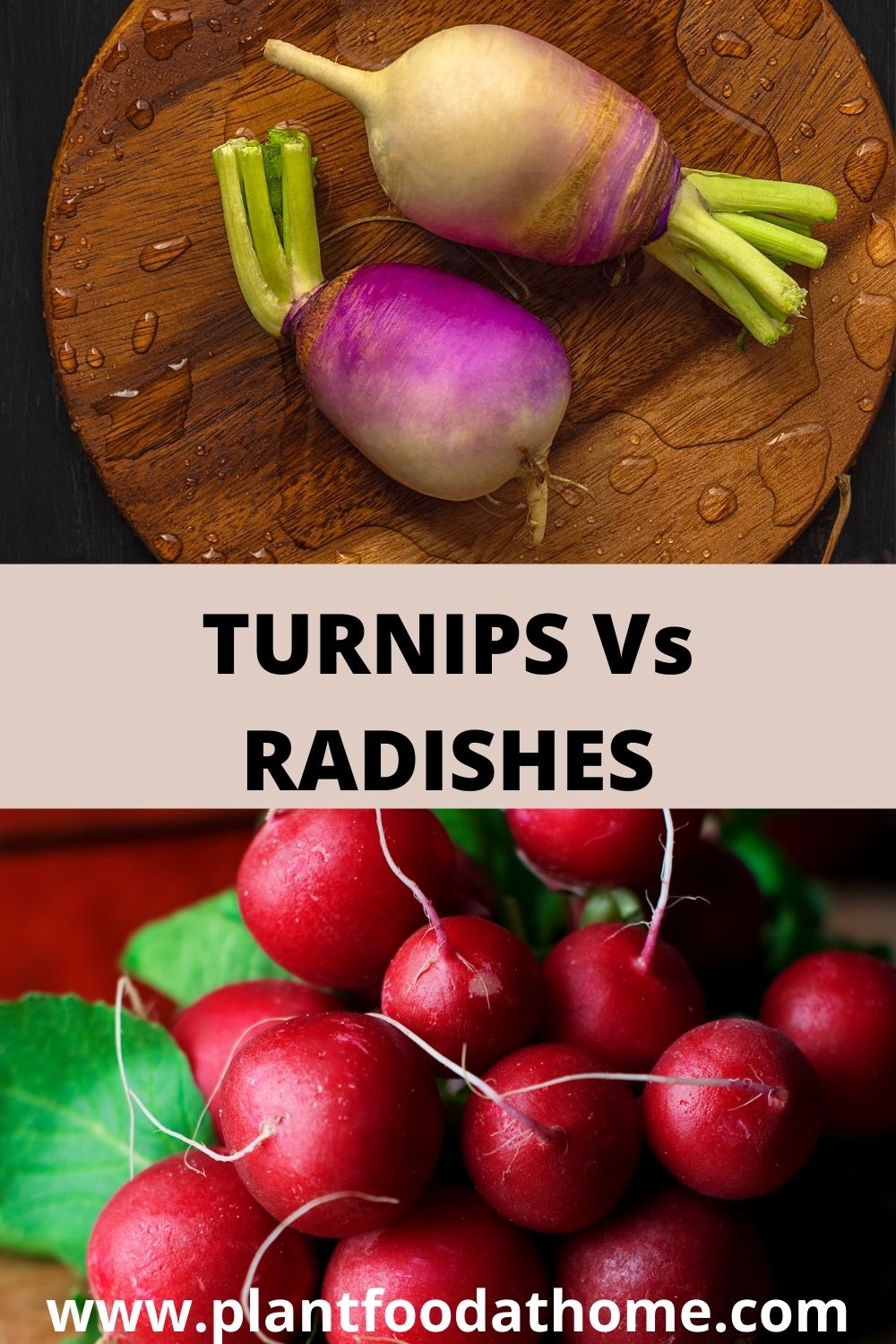At first glance, a turnip and a radish may look like very similar vegetables. They both have a globular edible root, tinged purple or red in color, with long leafy greens that poke out the top. Their flesh is generally white, though it can be tinged different colors. The vegetables are so similar that some varieties can look almost identical in the ground to the untrained eye. So let’s take a look at the differences between turnips and radishes.
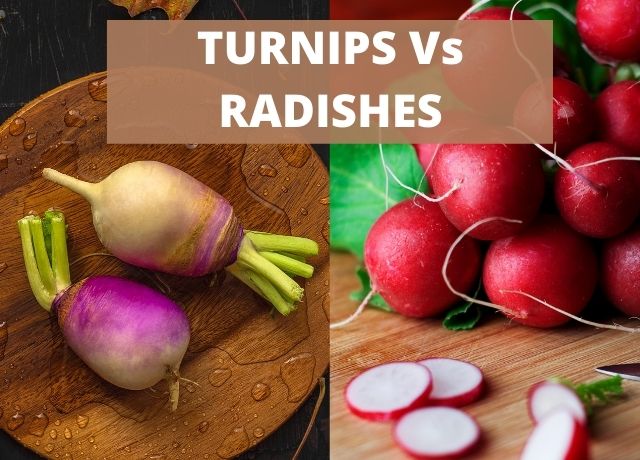
Table of Contents
- Are Turnips and Radishes in the Same Family?
- Difference Between a Radish and a Turnip
- Identifying Turnips Vs Radishes – Looks Can Be Deceiving
- Do Turnips Taste Like Radishes?
- Growing Radishes and Turnips
- Cooking and Recipes with Turnips and Radishes
- Turnip and Radish Greens
- Conclusion
- Some of My Favorite Kitchen Items:
Are Turnips and Radishes in the Same Family?
Turnips and radishes are both closely related, belonging to the same Brassicaceae family, commonly known as the mustard or cabbage family.
The Brassicaceae family contains all cruciferous vegetables including broccoli, rapeseed, and carrots. It is thought that both radishes and turnips originated in Asia, where wild forms of both vegetables are found and were domesticated between 400-300 BCE. They even came to the Americas around the same time, brought by the British in the 1500s.
Difference Between a Radish and a Turnip
Radishes, Raphanus sativus, are generally smaller than Turnips, Brassica rapa subsp. Rapa with a shorter growing period. While turnips are milder in taste compared to the peppery bite from a radish.
A closer look at these two root vegetables yields differences in their growing and cooking methods, and how they look and taste.
Identifying Turnips Vs Radishes – Looks Can Be Deceiving
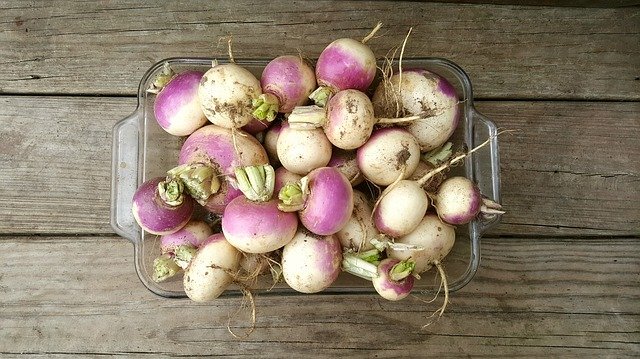
While many people think of turnips as white with a hint of purple on top, there are a few varieties that could probably pass as a radish. The Hida Beni or the Hirosaki Red varieties for example can be extremely deceiving because of their red skin.
Similarly, there are white radishes such as Daikons which look incredibly like turnips. In fact, the main ingredient in Chinese “Turnip Cake” (Lo Bak Go) is actually daikon radish, which adds to the confusion between these two vegetables.
For the most part, though, turnips tend to be larger than radishes. Most radish varieties are crimson in colour all the way down, while turnips fade to a white creamy colour where the sun has not touched. Inside, you will find white flesh, sometimes with red or pink veins. Radishes have a crisper texture than turnips, which are firm to the touch.
If in doubt, take a look at the leaves of the two vegetables. Turnip leaves are generally broad, while radish leaves are more narrow and delicate.
Do Turnips Taste Like Radishes?
Radishes have some of the same chemical properties that give mustard and horseradish their zesty flavour, in particular myrosinase. This enzyme reacts with glucosinolates, creating a chemical that is part of the plant’s natural defence system.
In contrast, turnips are very mild in flavour, and a young turnip will taste sweet. They lack the signature pungent bite that defines most radishes.
Growing Radishes and Turnips
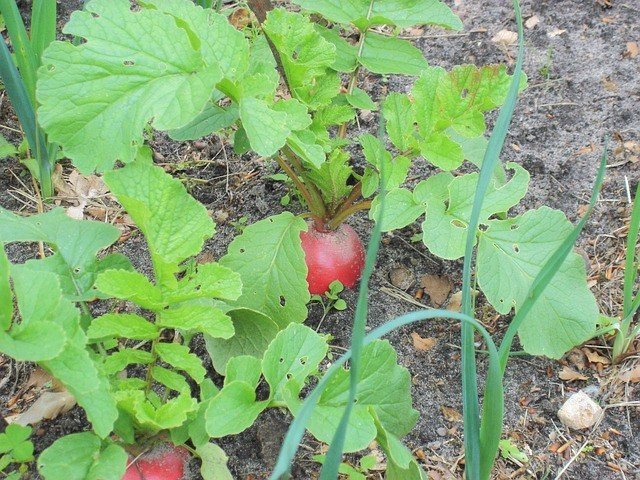
Because of the myrosinase reaction in radishes, they are naturally great at pest control and are often grown as a companion plant to keep bugs away. Flea beetles, cabbage aphids, and root maggots may still affect them, but in general, they are one of the easier vegetables to grow.
Radishes can be grown in all seasons, but they prefer the early spring or fall, with the optimal temperature between 50-75°F (10-24°C). Plant them in direct sun, and make sure the soil is free draining, fertile and moist. They grow more quickly than turnips, with some smaller varieties maturing in only 22 days.
We have an in-depth guide to growing radishes – How to Grow Radishes: the Easiest Vegetable to Grow.
Turnips are also cool weather vegetables, but autumn crops are generally sweeter than their spring counterparts. They grow slower than radishes, taking anywhere from 60-90 days to mature.
The ideal temperature for growing turnips is between 40-75°F (7-24°C). Turnips will grow largest in fertile, loose free-draining soil, and like radishes, prefer full sun. Turnips are slightly more susceptible to pests.
Keep in mind that the longer both turnips and radishes are left to sit, the tougher they become. Turnips can be left a little longer, but it’s generally best to eat these as close to harvesting as possible.
Cooking and Recipes with Turnips and Radishes
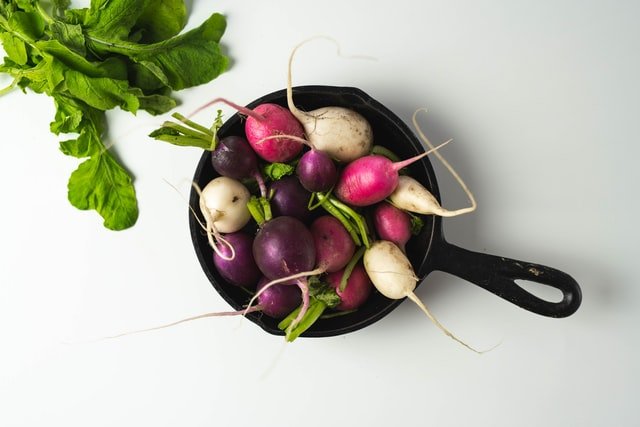
Radishes and turnips both get put into culinary boxes, limiting their usability. Understanding the differences and similarities of radishes and turnips opens up a whole new level of appreciation for these veggies, and new ways for them to be used.
Radishes – More than Salad
Radishes are generally thought of as a garnish, and little inedible rosettes may come to mind as their first use. It’s true that they make a wonderful addition to a spring salad or veggie tray, but they can be far more than that.
While many other root veggies end up on a roasting pan, radishes are often overlooked. Radishes can be roasted or sautéed, which will mellow out their flavour and bring out their sweetness. Treat them like you would treat a small potato, and they pair wonderfully with garlic.
Daikon radishes feature in Chinese home cooking, where they can appear braised with chicken, or shredded into a pancake. Pickled, they make a great crunchy burger topping.
Here are a few recipe ideas using radishes:
Turnips – More than Stew
Because turnips can sometimes be bitter and tough, they are generally cooked down and added to stews. In fact, when cooked, they can be used anywhere that a potato might be – even though they are not actually related at all to potatoes. While they make a great mash, and their texture is suitable for a hearty soup, you may want to reconsider and eat them raw like a radish.
As mentioned earlier, when first harvested, young turnips are tender, mild, and sweet. Young turnips are great in salads, and can even be shredded into coleslaw. Their starchy consistency complements apples very nicely.
Like radishes, they make for a great pickling vegetable, and red pickled turnips feature heavily in Middle Eastern cuisine. Try them in falafels and Doner Kebab to add a bright, clean taste.
Here are a few recipe ideas using turnips:
Parmesan Crusted Crushed Turnips
Pickled Hakurei Turnips Recipe
Turnip and Radish Greens
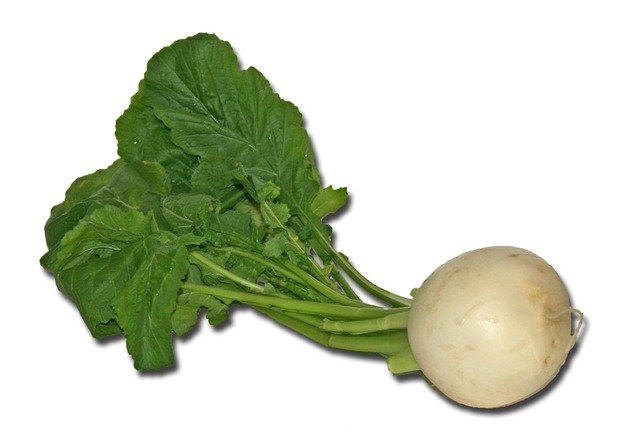
After you have discovered a whole new way to enjoy these amazing vegetables, you may want to consider using a little more of them in future. The greens of radishes and turnips are both often discarded, which is a shame as both are edible and can make for a great meal.
Turnip greens are very closely related to mustard greens, and can be cooked in a similar way. Because they are very tough, add an enzyme like vinegar or lemon juice that will break down the fibrous cell walls. From there you can fry them, bake them, or add them to your favourite crockpot recipe.
Radish leaves taste a lot like Swiss chard, retaining the peppery taste that the root is associated with. They are more tender than turnip leaves, and can be eaten raw or sautéed, or even added to pesto.
Keep in mind that if you’ve let your vegetables go to seed, radishes and turnips both produce edible flowers, which make a wonderful and colourful addition to a salad.
Related: Eating Turnip Greens With Recipe Ideas
Conclusion
Even though turnips and radishes belong to the same family of vegetables, giving them some similarities, a closer look reveals distinct differences in not only how they look and taste, but also how they grow and how they are cooked.
So in spite of, or perhaps because of, their differences, radishes and turnips are a great addition to any vegetable garden, so why not grow both for the next growing season?
Some of My Favorite Kitchen Items:
Further reading:
- Can You Eat Radish Greens? (And How to Eat Them)
- Quick Pickled Radish Greens Recipe
- Lychee Fruit: What is a Lychee and How to Eat One
- Pomelo Fruit: What is a Pomelo and How to Eat One
- How Many Ears Of Corn Grow On One Stalk? (Answered!)
- Galangal Vs. Ginger: What’s the Difference?
- Are Carrots a Fruit or a Vegetable? Answered!
- Globe Artichoke Vs. Jerusalem Artichoke: What’s the Difference?
